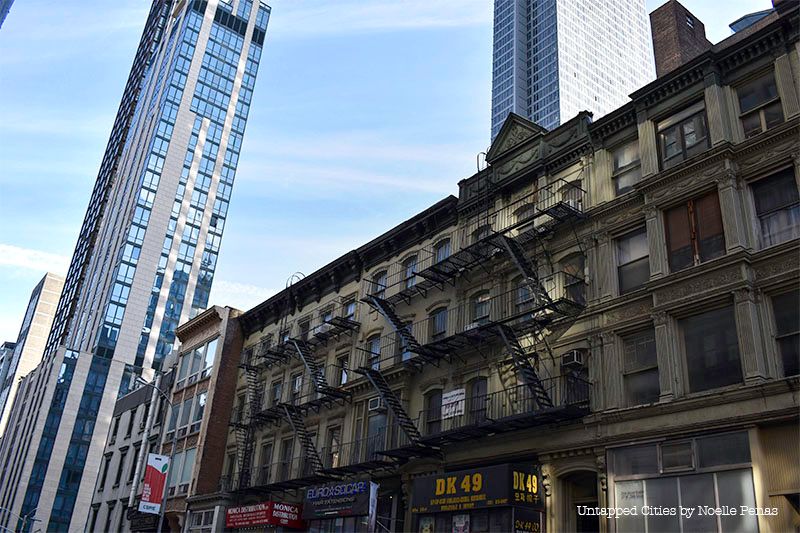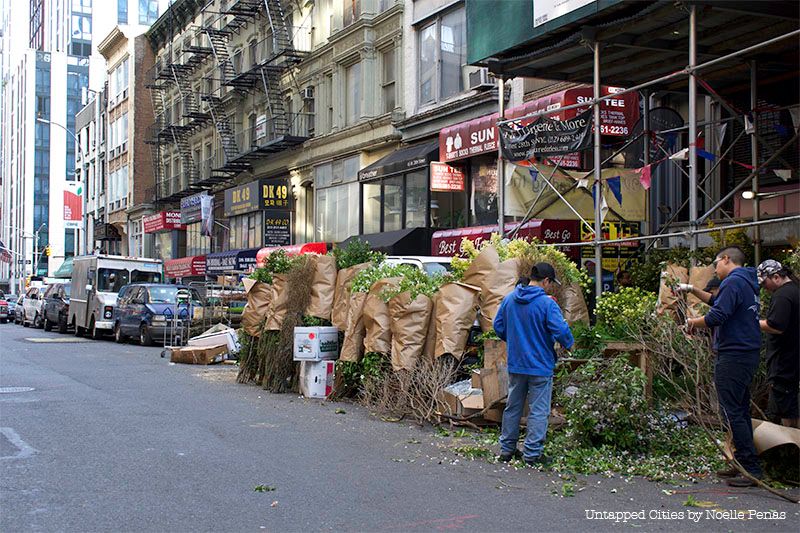Last Chance to Catch NYC's Holiday Notalgia Train
We met the voices of the NYC subway on our nostalgia ride this weekend!


Within the former Tenderloin district, Tin Pan Alley was the tiny sliver of a block of 28th Street between Broadway and Sixth Avenue. Starting in the late 1800s, the stretch was synonymous with American popular music. Scores of music publishers and songwriters were located there, in former Italianite rowhouses that can still be seen. It was here that songs like “Take Me Out to the Ball Game” and “God Bless America” were published. Until recently, those buildings had been at risk of demolition but today, the New York City Landmarks Preservation Commission approved the designation of Tin Pan Alley as an official landmarks.
Specifically, five buildings on 28th Street, numbers 47, 49, 51, 53 and 55, are the latest New York City landmarks. Landmarks Preservation Commission Chair Sarah Carroll said, “Tin Pan Alley was the birthplace of American popular music, was defined by achievements of songwriters and publishers of color, and paved the way for what would become ‘the Great American Songbook.’ Together, these five buildings represent one of the most important and diverse contributions to popular culture.”

The Landmarks Preservation Commission notes the unique coalescing of activities in Tin Pan Alley that would have a profound influence on how popular music was produced and promoted: “Here, composers, arrangers, lyricists, performers, and printers came together as collaborative firms and revolutionized the music industry’s practices,” the Commission contends in a press release.
And equally important was the opportunities afforded by the Tin Pan Alley businesses to marginalized populations, like Blacks and Jews. According to the Commission, “Tin Pan Alley’s music publishing brought ragtime to an international public, and Jewish and African-American artists and publishers were able to create new and unprecedented opportunities for themselves in mainstream American music.” Some of the most prominent among them include Irving Berlin, George Gershwin, Duke Ellington, and Cole Porter.

Tin Pan Alley also has a fun Erie Canal connection. According to Jack Kelly, the author of Heaven’s Ditch: God, Gold, and Murder on the Erie Canal who wrote an article for us at the launch of his book, “In 1905 a Tin Pan Alley songwriter named Thomas Allen published sheet music for a tune called “Low Bridge, Everybody Down.” The piece begins, “I’ve got a mule and her name is Sal . . .” It became the classic Erie Canal song, offering a nostalgic look backward at a time when mules were being phased out. Pete Seeger, Bruce Springsteen, and countless millions of school children have sung the song down the decades.”

Today, Tin Pan Alley overlaps with the city’s Flower District, itself a disappearing industry existing on top of another already lost. On a visit during a weekday, you may see flowers and trees taking over part of the road and workers actively cutting and arranging the goods.
The effort to landmark Tin Pan Alley has been a multi-year effort and in addition to the testimony of local preservationists and political figures, the descendants of many of the musicians such as the grandchildren of Duke Ellington, also wrote in support.
Next, check out a street art piece of Evelyn Nesbit you can see near Tin Pan Alley.
Subscribe to our newsletter